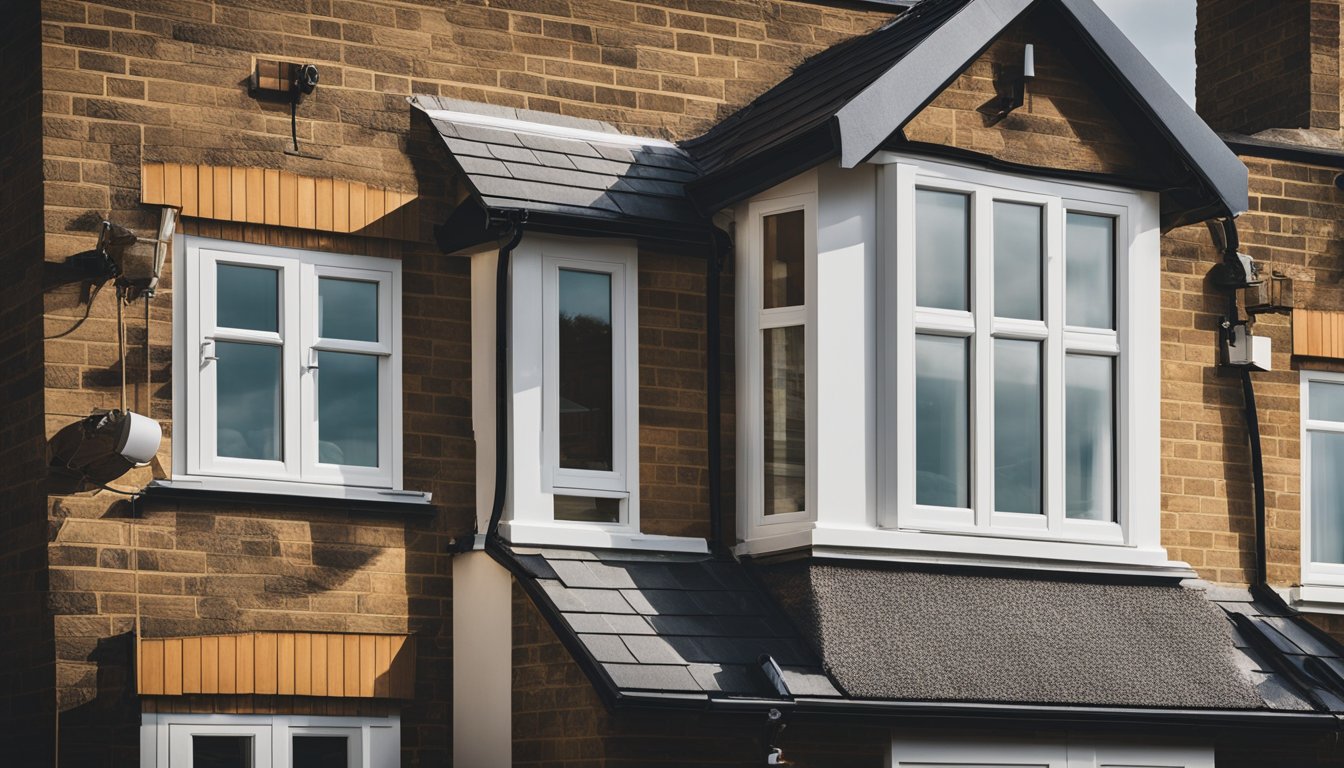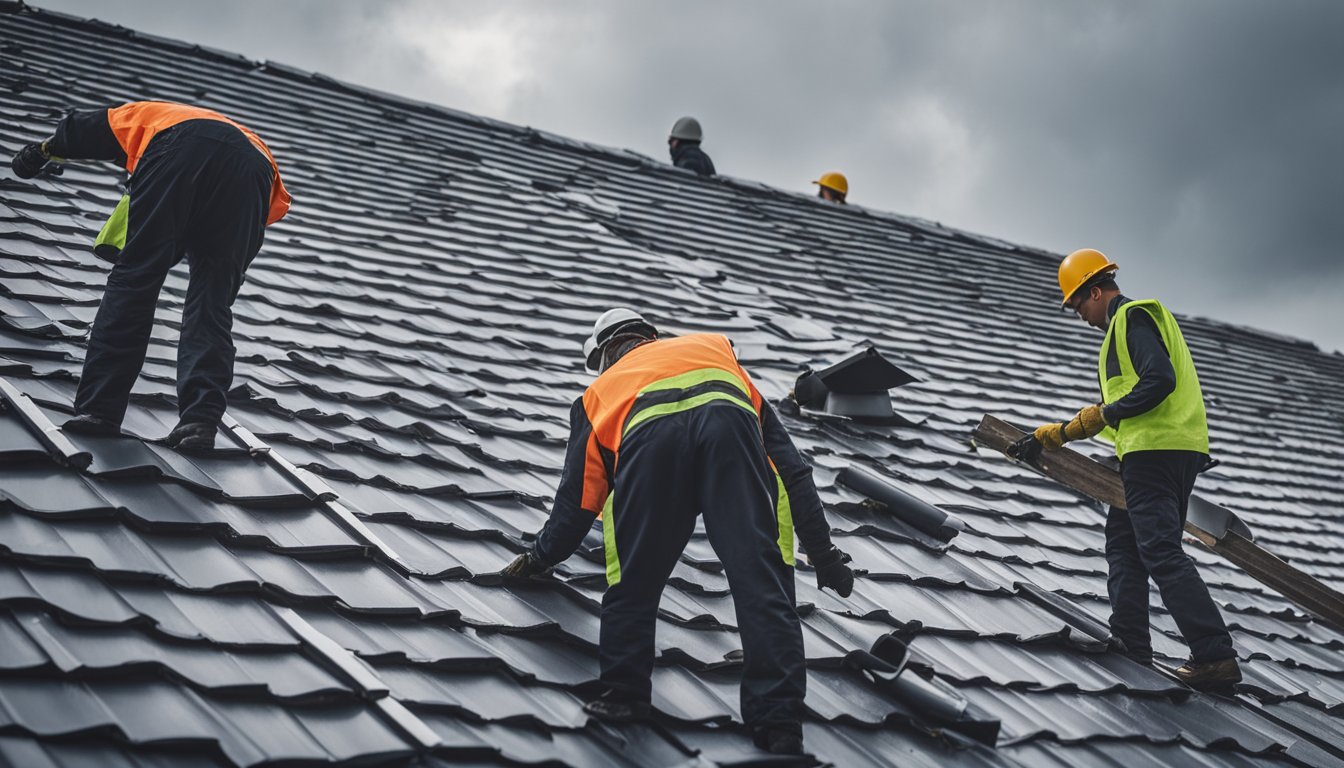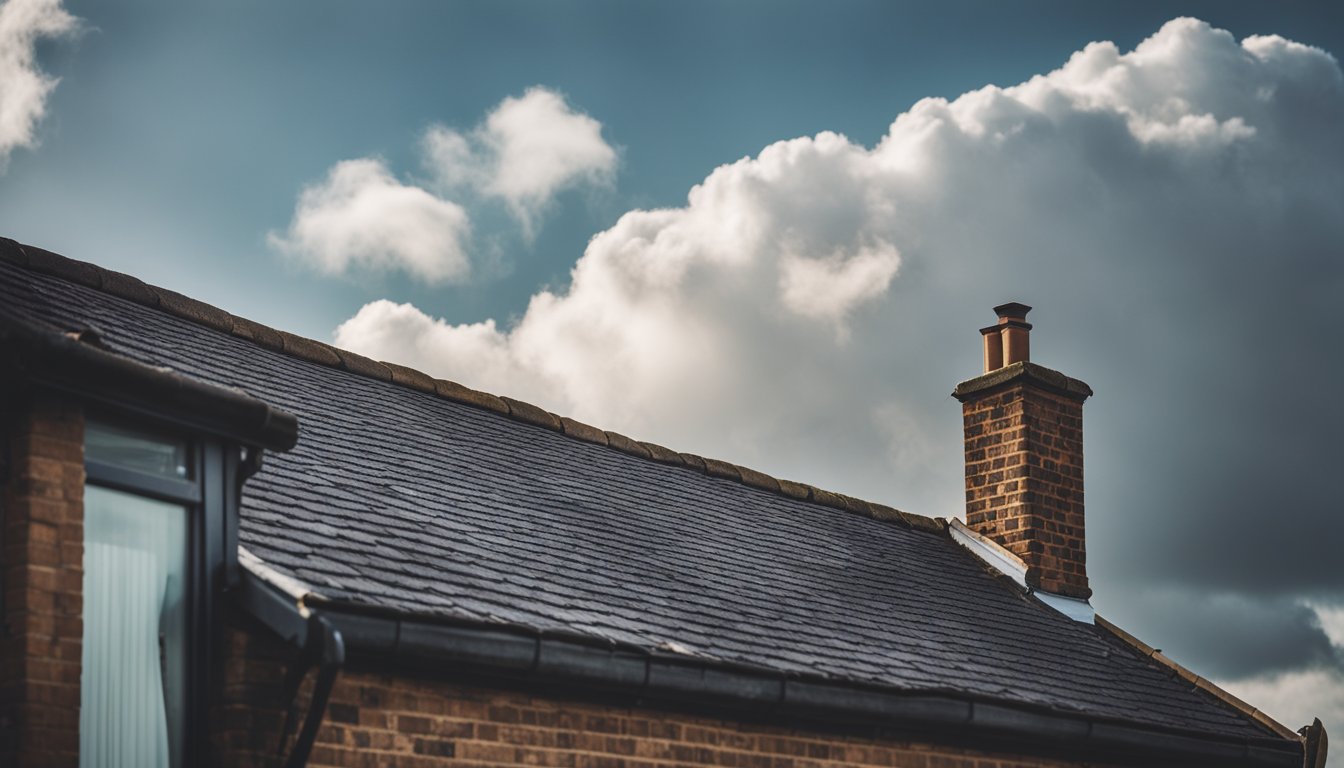Late updated: 22 Oct 2024 13:10
Written by: Oliver Bennett
Durable Roofing Solutions For UK Weather Conditions: Expert Recommendations
Navigating the unique challenges of the British climate when it comes to roofing can be a daunting task. The key to ensuring a roof withstands the ever-changing weather is choosing materials known for their resilience. Slate and clay tiles are some of the most durable solutions, offering long-lasting protection against the frequent rain, fierce winds, and occasional snow that the UK is famous for. These materials are trusted not just for their longevity but also for their excellent performance in keeping homes safe and efficient.

Our exploration of roofing solutions takes us through various options that are tailored to endure the demands of the UK market. The right choice involves selecting materials specifically designed to deal with harsh weather conditions while maintaining energy efficiency and visual appeal. Investing in robust roofing not only secures homes from potential damage but also extends the overall lifespan of the property.
As we discuss the importance of proper installation and maintenance, we emphasise that these processes are as critical as selecting the right materials. Professional installation ensures that roofs can achieve their full potential in durability, while regular maintenance helps identify and fix minor issues before they escalate. This comprehensive approach is vital for anyone looking to protect their investment in a UK home.
Key Takeaways
- Slate and clay tiles are top choices for durability.
- Proper installation is crucial for maximising roof lifespan.
- Regular maintenance prevents long-term damage.
Selecting Suitable Roofing Materials for UK Weather

Choosing the right roofing materials for the UK's unique weather is crucial for ensuring durability and performance. In this section, we will examine various options including the benefits of tiles and the versatility of synthetic materials like EPDM and TPO. We'll also consider the eco-friendly advantages of green roofing solutions.
Concrete vs Clay Tiles: Weighing Durability and Maintenance
Concrete and clay tiles are popular choices in the UK thanks to their robustness against extreme weather conditions. Concrete tiles are known for their incredible durability and ability to withstand heavy rain, strong winds, and fluctuating temperatures. They require modest maintenance, making them a practical choice for homeowners.
Clay tiles, though typically more expensive, offer additional benefits. They are highly weather-resistant and can endure up to 150 freeze-thaw cycles, which is vital in certain UK regions. Their natural insulation properties provide comfort during both cold winters and warm summers. However, clay tiles may demand more maintenance to preserve their appearance over time. Both materials deliver excellent longevity, but the choice ultimately hinges on budget and maintenance preferences.
Synthetic Options: EPDM and TPO Roofing
Synthetic roofing materials like EPDM (Ethylene Propylene Diene Monomer) and TPO (Thermoplastic Polyolefin) are increasingly preferred for their adaptability and resilience. EPDM roofing is valued for its watertight seal and flexibility, which helps it endure temperature variations and physical stress without cracking.
TPO roofing offers comparable benefits, with added energy efficiency through its reflective surface that decreases heat absorption. Both EPDM and TPO are lightweight, reducing structural strain, and their low maintenance requirements are appealing. Suitable for flat or low-slope roofs, these materials provide a durable solution with life spans of 20–30 years. Additionally, their environmental impact is minimal due to recyclability, making them an attractive choice for eco-conscious homeowners.
Green Roofing: Combining Sustainability with Efficiency
Green roofs are the pinnacle of sustainability, offering environmental advantages alongside traditional roofing protection. These coverings utilise vegetation to enhance energy efficiency by reducing heat absorption in summer and providing insulation during winter. This natural layer can also absorb rainwater, mitigating flooding risks in urban areas.
The eco-friendly roofing contributes to improved air quality by integrating plant life, which captures harmful particles and releases oxygen. Green roofs do require a higher initial investment and maintenance, including irrigation systems and plant care. However, they represent a holistic approach to roofing that aligns with increasing sustainability demands, offering long-term durability and benefits for both the homeowner and the environment.
Effective Installation and Maintenance for Long-Term Performance

Ensuring the longevity and performance of roofing solutions in the UK is pivotal. Proper installation and regular maintenance significantly enhance weather resistance, minimise the risk of leaks, and support energy efficiency.
Ensuring Weather Resistance and Energy Savings
The quality of installation has a direct impact on weather resistance. Weather-proofing techniques, such as fitting high-quality seals and using watertight materials, especially around vulnerable areas like chimneys and vents, are essential. By using materials like PVC, known for its durability, we enhance energy efficiency by reflecting UV rays, thereby reducing heat absorption.
To support energy savings, it's important to choose roofing materials that offer natural insulation and deflect UV rays. This reduces the need for artificial cooling, leading to lower energy costs over time. Selecting energy-efficient materials doesn't just contribute to cost savings; it also supports environmentally friendly practices.
Minimising the Risk of Leaks and Structural Damage
Installing a roof correctly is critical in preventing leaks and structural damage. A focus on creating a watertight seal by using layers and overlaps prevents water ingress. Attention must be paid to installation details, ensuring every joint and edge is properly sealed.
Issues like improperly installed flashing or damaged membranes can quickly lead to moisture penetration and roof compromise. To avoid this, a meticulous approach during installation and timely repairs are crucial. By protecting the underlying structure, we maintain the roof's structural integrity and prolong its durability.
Routine Roof Inspections: Preventive Measures for Durability
Regular roof inspections are essential in identifying potential problems early. These inspections should check for issues like warped or cracked tiles, compromised flashing, and debris buildup. By scheduling regular check-ups, we can address minor issues before they escalate into major problems.
Proper maintenance includes clearing gutters and replacing damaged sections promptly. Longevity is supported through these preventive measures, ensuring the roof continues to perform effectively against the elements. Routine inspections help us save on huge repair costs by keeping the structure and its components in top condition.
Frequently Asked Questions

In the UK, roofing requires careful consideration of both materials and techniques to withstand diverse weather conditions. Addressing common concerns about roofing systems helps ensure durability and effectiveness amidst heavy rain, strong winds, and cold climates.
What materials offer the best resilience against extreme weather in the UK?
For roofs in the UK, materials like slate, clay tiles, and EPDM rubber are highly recommended. Slate and clay tiles are well-known for their longevity and aesthetic appeal. Meanwhile, EPDM rubber is praised for its weather-resistant properties, offering a lightweight yet durable solution designed to handle extensive exposure to rain and wind.
Is it possible for roofing professionals to install roofs during rainy conditions prevalent in the UK?
Yes, professionals can install roofs during the rain, using specialised techniques to ensure the integrity of the structure. Safety precautions are taken to protect both workers and materials. However, certain conditions like heavy downpours or storms may lead to scheduling adjustments to maximise safety and installation quality.
Which roofing system is considered the most eco-friendly and durable for British weather?
Metal roofing, particularly standing seam aluminium, is considered both eco-friendly and robust. It boasts recyclability and a long lifespan. Additionally, green roofs, which incorporate vegetation, provide insulation and stormwater management benefits. These systems balance environmental impact with durability in challenging weather scenarios.
What style of roof construction is recommended for areas with a predominantly cold climate in the UK?
For colder climates, pitched roof designs are advised due to their ability to shed snow and prevent ice dams. These designs facilitate effective water runoff. Coupled with proper insulation and ventilation, pitched roofs maintain interior temperatures and reduce the risk of structural issues caused by trapped moisture or cold air.
How should roofs in coastal UK areas be constructed to withstand salty, windy conditions?
In coastal regions, we recommend using corrosion-resistant materials, such as stainless steel or treated wood. Special attention should be given to securing roof shingles and flashing systems against high winds. Regular maintenance checks are essential to address salt-induced degradation and ensure continued resilience against the elements.
What maintenance routines are suggested to prolong the lifespan of a roof in UK weather?
Regular inspections are crucial, ideally twice a year, to spot damage or wear. Clearing gutters, replacing damaged tiles, and checking seals can prevent leaks and structural issues. Additionally, timely response to minor repairs significantly reduces the risk of extensive damage and prolongs the roof’s lifespan amidst the UK's unpredictable weather.
